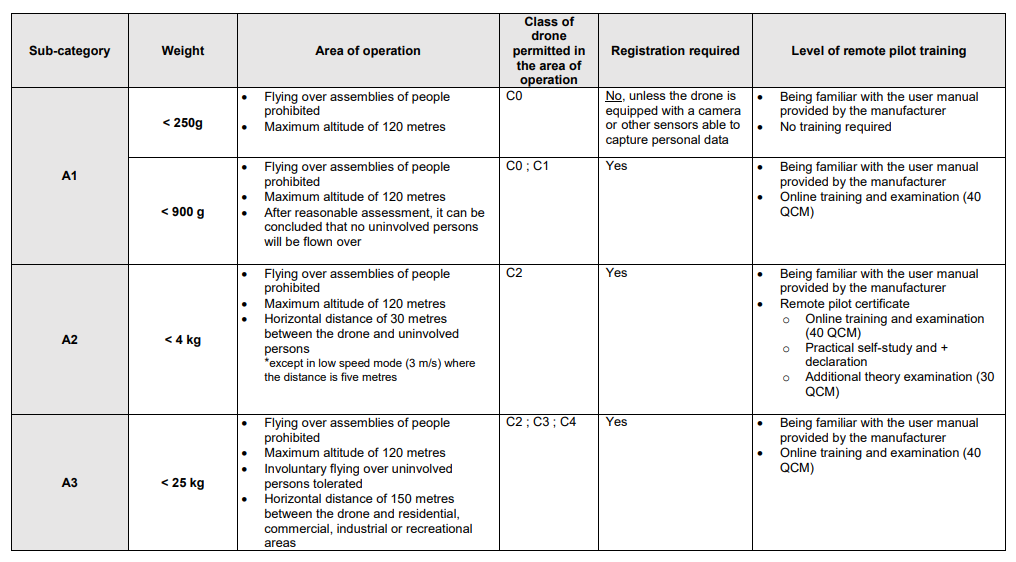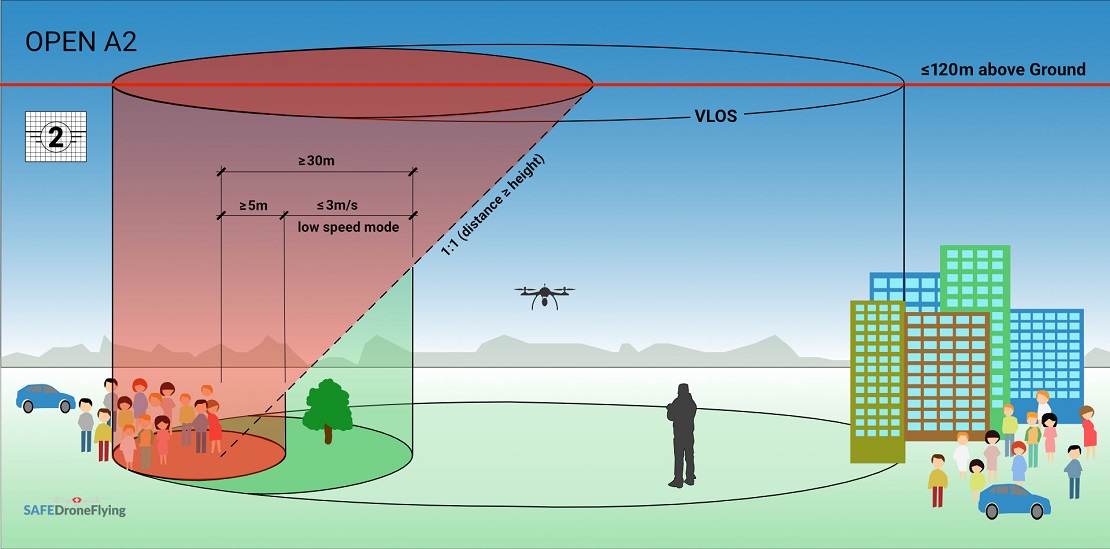drone regulations
The categories for the operation of drones
In the open category, drones can be used without a permit if they are flown on sight, remain below 120 m in altitude and have a maximum flying weight of 25 kg. Depending on the weight of the drone, there are restrictions on how close to uninvolved persons it can be flown. The pilot must register with the aviation authority.
In the specific category, drones are operated for which a permit from the aviation authority is required, for example if they are flown out of the pilot's line of sight. As a drone pilot in the special category, theoretical and practical training is mandatory.
The category certified is intended for drone flights with high safety requirements, for example, for passenger transport. Drones in this category have a size of at least 3 meters. The scope of the legal provisions hardly differs from manned aviation.
The airspace for drones

The following explanations and rules refer to the open category. The vast majority of drones are operated in the open category.
The most important EU rules for drones
| I am adequately insured |
When I fly a drone, I need to make sure that I am properly insured for my flight. In the event of an accident, liability lies with the drone pilot. I must pay for the damage I have caused.
| I respect the privacy of others |
When I fly a drone, I must comply with the legislation on data protection and privacy. Everyone has the fundamental right to protect their privacy, so I never fly low over private property.
| I know the area restrictions |
When I fly a drone, I am aware of where it is allowed to fly and where it is not. The drone map helps me to be aware of area restrictions. It shows those areas where it is prohibited or restricted to fly around my drone.
| I keep visual contact |
When I fly a drone, I maintain visual contact with my drone. It is my responsibility to keep enough distance from other aircraft and to take evasive action in time because they cannot see my drone.
|
I do not fly higher than 120 meters
|
When I fly a drone, I keep a maximum flight altitude of 120m above ground, unless I am in possession of an appropriate permit.

| I avoid crowds of people |
When I fly a drone, I am not allowed to fly over uninvolved persons and crowds of people.

- Within a radius of 750 metres around the nuclear power plants and the Würenlingen interim storage facility.
- Over military territory.
- In hunting and nature reserves.
- Above switchgear or substations of the power supply.

- In the SIL perimeter of a civil aerodrome or in the SPM perimeter of a military aerodrome.
- About prisons.
- Within a radius of 500 metres for police and emergency operations.
- Above the Ruswil compressor station and the Wallbach measuring station.

Additional restrictions for a take-off weight of 250g or more
- No flying at a distance of less than 5km from the runways of an aerodrome.
- Flight ban in an active CTR if a height of 120 metres above ground is exceeded.
Distance rules to uninvolved persons and crowds 
Open A1 - I may fly over uninvolved persons, but should avoid doing so if possible.

Open A2 - I may not fly over uninvolved persons.

Open A3 - The remote pilot must maintain a minimum horizontal distance of 150 m from areas where there are 10 or more uninvolved persons within a radius of 100 m at the time of the operation.

The maximum height is 120 metres above ground
Anyone flying their drone in the open category may not exceed a maximum height of 120 metres above ground.
If the drone operation takes place over a terrain with natural elevations, the drone must be kept at a maximum distance of 120 metres from the nearest point on the earth's surface.
If an obstacle higher than 120 metres has to be flown over, the obstacle may be flown over at a maximum vertical distance of 15 metres.
